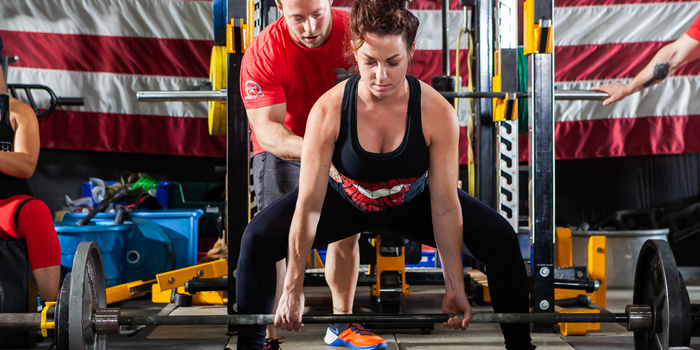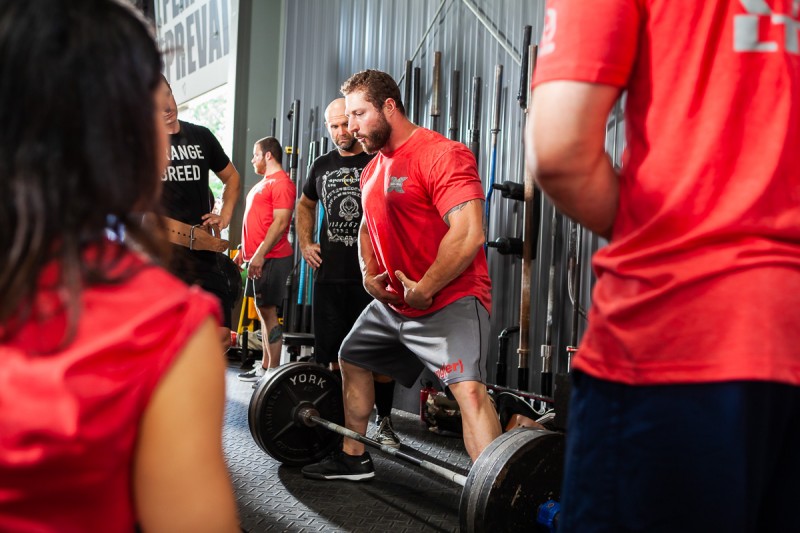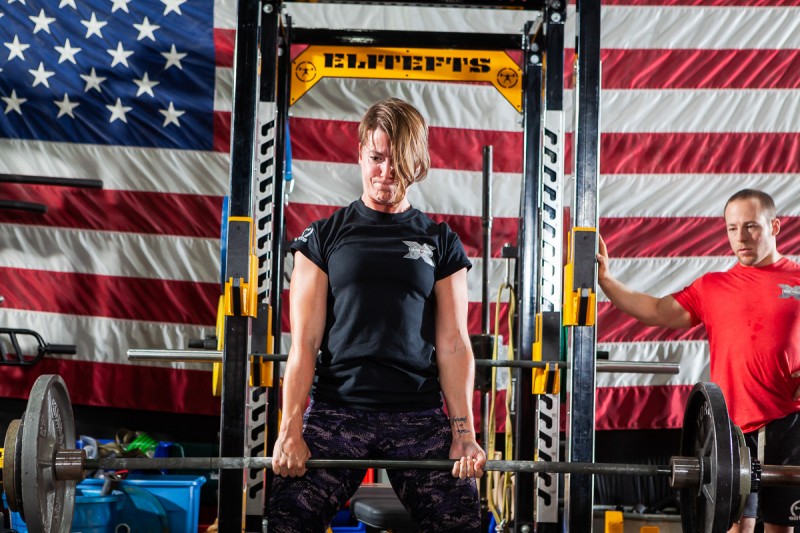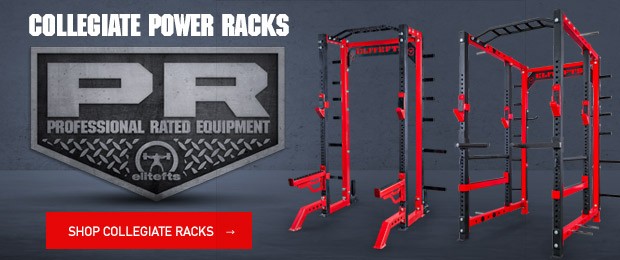
Want to know how you can breathe better, fix the abdominal pressure, and get better body control to gradually increase the weights in the basic exercises like squats? Then you have to read this article!
Have you aimed for a heavy squat and missed the lift just as the weights moved from your leg to your torso and fallen over? Did you have to interrupt your lift or perhaps your whole training session? Does it feel like your legs do not really have the energy and the ass goes first up, while the lumbar spine can break up your body before you to have to stand on your nose?
I was at the Swedish Championship in powerlifting and saw this happen. The guy who missed his squat had some supporters in the audience, and I heard a person, who I thought was one of his coaches, say, "He is too weak in quads. He'll have to do a lot of leg extensions when we're back in the gym!”
RECENT: Physics Made Easy to Increase Your 1RM
In order to keep the body stable and to get oxygenation, it is necessary to breathe and create abdominal pressure. I have met many patients who had chronic lower back pain because they had the wrong muscle involvement in the trunk as the result of a bad breathing pattern that generated a poor abdominal pressure.
Vladimir Janda, a Czech professor of neurology, stated that the diaphragm and the transverse abdominal muscles first activate when we engage the core muscles, and then the assisting muscles kick in. If the diaphragm and transverse abdominal muscles do not initiate movement, compensating muscles that emanate from the thoracolumbalfacsian do the work instead. The fascia sits in the lower back and connects the lower body and upper body muscles, right where the muscles cross. Gluteal muscles on the right side have a connection to the latissimus on the left side that is the thoracolumbalfacsian connecting them.

To succeed in involving abdominal pressure, we have to use something called “diaphragmatic breathing.” This means that you breathe down the air by lowering the diaphragm. Many people breathe in by filling the chest with air. What you actually do then is raise the diaphragm by giving the lungs less room and losing abdominal pressure. The lungs act as a depot for the blood and can hold about 1 liter of blood when you take a deep breath.
The volume of human blood is about seven to eight percent of body weight, which would mean that a person weighing 154 pounds (70 kilograms) has about five liters of blood in the body. If the lungs are holding 1 liter of the blood — 20 percent of the blood in their body — during severe stress, it is not enough oxygen for the brain to absorb. In a heavy deadlift or squat, that may mean that blood cannot carry sufficient oxygen to the brain. In other words, the athlete will pass out from lack of oxygen to the brain. Therefore, it is recommended that you do not inhale more than 75 percent of the maximum breath.
Ruud Alsemgeest, who taught through the Rehabilitation Prague School and assisted Dr. Hans Lindgren during a training course I attended, compared abdominal pressure to a PET bottle. Empty PET bottles are easy to bend. Put the capsule on it, and you cannot bend it anymore. Why not? It is the same matter inside the bottle surface as on the outside — namely air. It's the plastic that surrounds it. The only difference is that the capsule prevents air from coming out, and it creates pressure inside the bottle. As you bend the bottle, the air inside has nowhere to go. The more stress you put on the bottle, the higher the pressure inside the bottle becomes. We can increase the load until the point when the plastic of the bottle is no longer able to resist the pressure and break. A balloon works the same, but because it is soft, it can shape itself.
It may be useful to analyze your muscle activation around the abdominal pressure during three big lifts: squats, bench press, and deadlift (or the clean and jerk if you compete in weightlifting or crossfit). There are so many people who have the opinion that you should look up with your eyes when doing squats and deadlifts. How can you keep the abdominal pressure? It is impossible to keep without a neutral position around the neck, thoracic spine and lumbar, which encourages you to keep a good pressure throughout the body and distribute the weight evenly across all of your spine and the muscles around it. A person looking at the ceiling sags because the vertebrae are reactive to each other.
What can you do to train correct breathing methods to properly engage abdominal pressure? One of my favorite exercises is the so-called DNS plank, which stands for Dynamic Neuromuscular Stabilization, and is just about to turn the stabilizing effect of the plank and not just muscles. During the DNS plank, you stand, which contrasts with the usual plank on your knees. Extend your legs apart and put down your elbows with your palms against the floor. Make sure to keep your body straight over the floor and do not let your lower back sag. If you then feel that you are stable, begin by lifting one elbow and stay in the air for about five seconds. Do not lift more than .75 inches (2 centimeters) above the floor. If it feels light, lift the knee evenly from the floor on the opposite leg and hold for five seconds. It becomes a diagonal movement that requires you to hold the body in place with the help of your stabilizing muscles. Just as you do in all the exercises you do to become stronger, even in your everyday life.
If the exercise above feels too easy, you can try out an extended version: the abdominal wheel. You don’t do it with your knees beside each other. Instead, you should spread your legs like a frog, and then you do the exercise. What happens is that when you engage the abdominal pressure, you activate the transversal abdominal muscles much more than if your legs are closer than if you mostly activate the six-pack. Who needs a six-pack in powerlifting anyway?
For example, while training with a dumbbell row, put your feet next to each other and hold the position. You will not be able to lift heavier weights at first; now the core is probably the weak link. But once it’s caught up, you can take your old weights back, and you will also be able to lift more in other exercises because you will have better stability.
To learn to breathe with the stomach, it really can be explained here. It is good to start to breathe with a sunken chest and feel the air go down in the stomach, then you control the air out to the sides of the stomach, not against the six-pack. Imagine a line from the navel down to the clearest part of the pelvic crest to the side. Around the middle of the line, add fingers and try to feel the abdomen that is filled with air on both sides as you inhale. When you come so far, trying to get a smooth and regular breathing. The easiest way is if you just breathe in and out through your nose, then it is adequately controlled. When you breathe in, you have air towards the fingers, tighten the stomach to the fingertips. Once you have gained control of the movement, try to maintain the tension and pressure in the stomach as you breathe again without losing pressure. Try to establish the breathing and trunk control in all basic exercises.
The reason you should breathe through the nose and not the mouth is that if you breathe with your mouth open, you get too much air which will accumulate in the chest. When the chest goes up, you lift your diaphragm and lose the abdominal pressure. It’s like you screw loose the cork on the PET bottle I talked about earlier. If you feel that you don’t get enough oxygen when you only breathe through your nose, then you can breathe through your mouth with closed teeth, allowing you to suck the air in instead of having your mouth wide open. This creates also an abdominal pressure because the air that sucks in slowly create like a vacuum in your abdominal area and gets it tense.
NEWS: Introducing elitefts Columnist Stefan Waltersson
I conclude with an anecdote from when I lectured about body control and posture at the Sahlgrenska University Hospital in Gothenburg. I just finished with a PowerPoint presentation about the body's stabilizing muscles when I was asked if I could show what it does in practice. Fairly quickly the staff borrowed me for a medical expedition where there was a bed. A nurse lay down on her back and tried to do a sit-up. It was noticeable that there was no power in the movement. When she breathed as I described and managed to create a pressure in her core using the diaphragm and the oblique abdominal muscles (which I could feel with my fingers on her stomach), she practically flew up in the sit-up and looked as surprised as staff who participated in the seminar and now were standing in the audience.
Again, think of the PET bottle with the cap screwed: It’s the pressure that gives you power!
Summary
In this article, you've learned:
- What abdominal pressure is and the effects of good abdominal pressure.
- The risks of poor abdominal pressure and what happens to your well-being and your health when you don’t have it.
- What you can do to get better control of your breathing pattern and your abdominal pressure.
- How abdominal pressure affects the control of your body, but also your performance in weight training so that you can work more safely and more efficiently.











